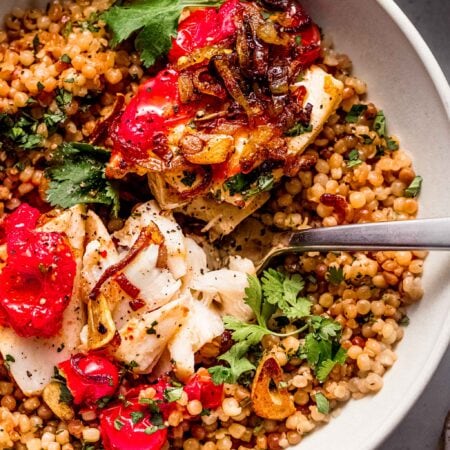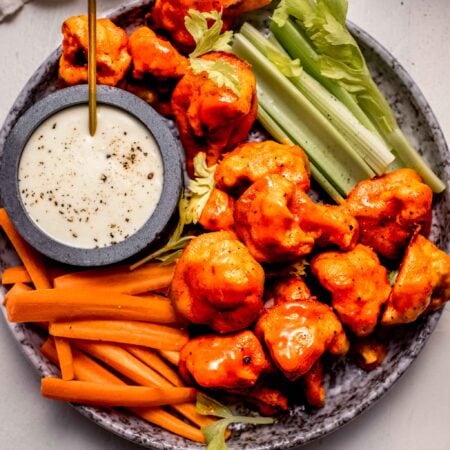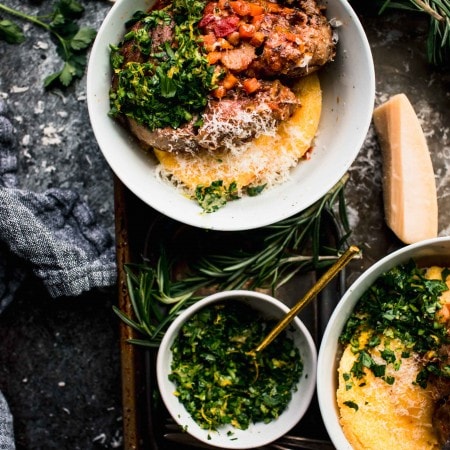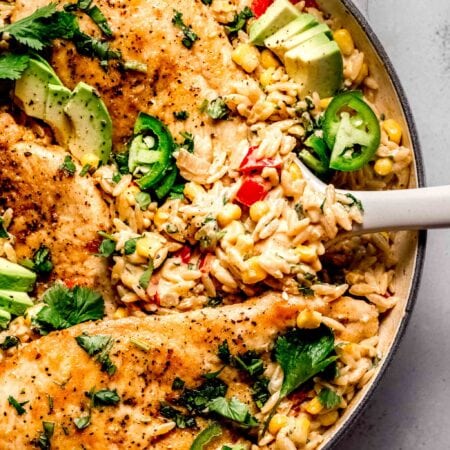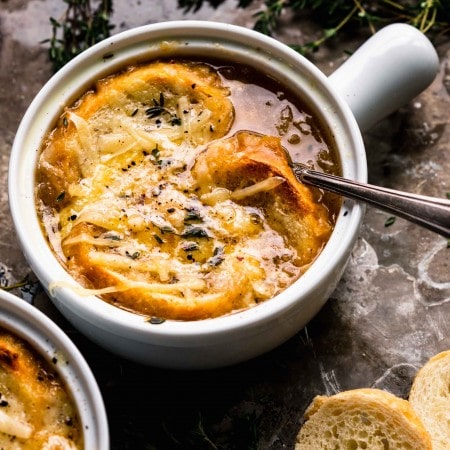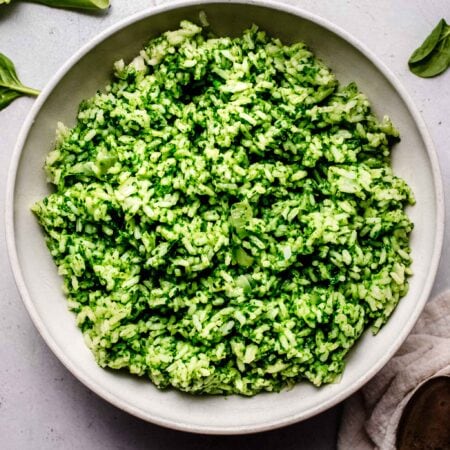Whether you’re grilling, sautéing, boiling, or frying shrimp, achieving the perfect level of doneness is crucial to unlocking its full potential. In this easy-to-follow guide, we’ll discover various methods and indicators that can help you determine when your shrimp is cooked to perfection!
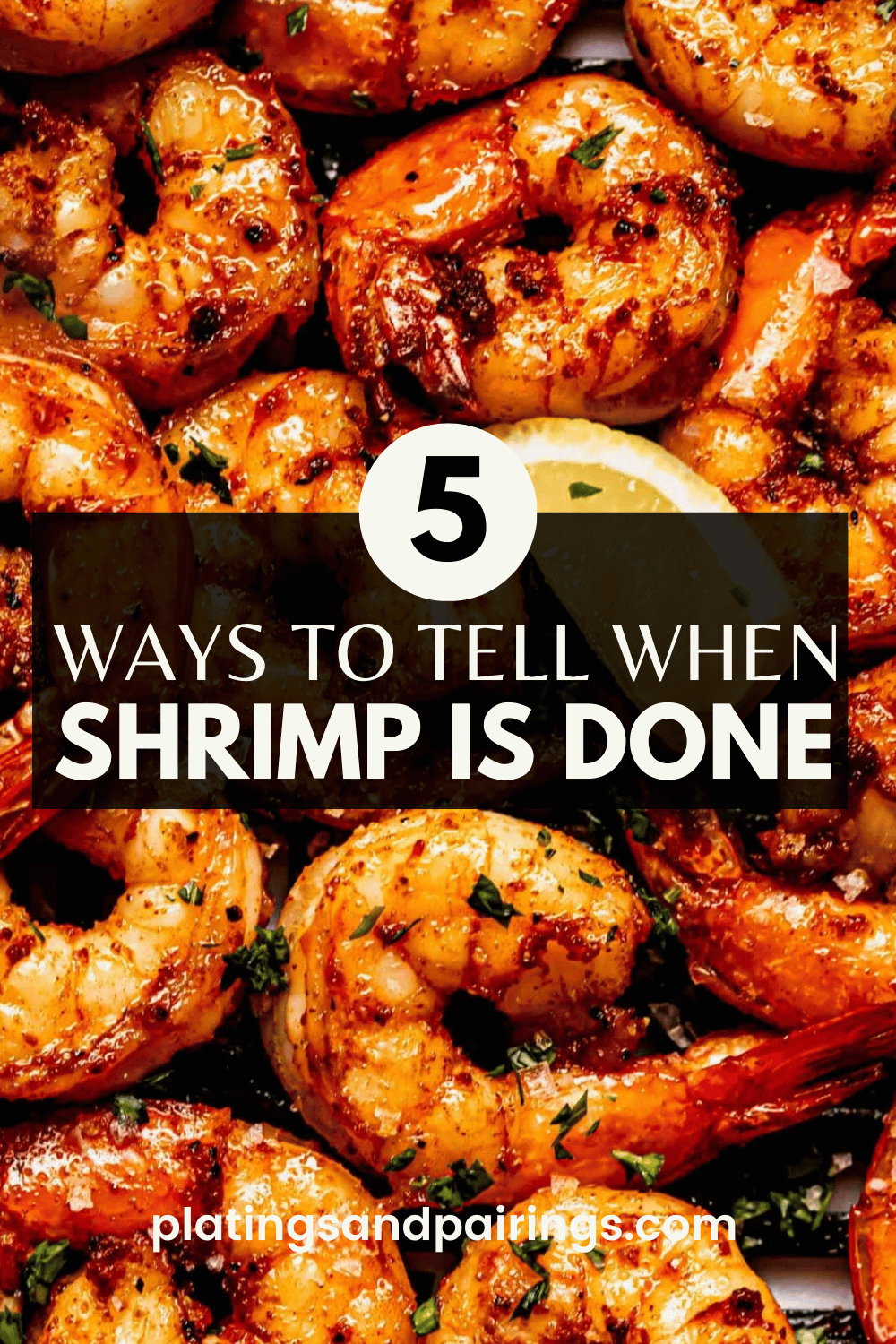
Want to Save This Recipe?
Enter your email & I'll send it to your inbox. Plus, get great new recipes from me every week!
By submitting this form, you consent to receive emails from Platings + Pairings.
Undercooked shrimp can pose health risks due to potential harmful bacteria, while overcooked shrimp can result in a rubbery and unpleasant texture. Achieving that sweet spot ensures a succulent and flavorful shrimp experience.
Here’s the best ways to ensure that you have perfectly cooked shrimp every time!
Visual Cues
1. Color Transformation
One of the most noticeable visual cues indicating shrimp doneness is its color transformation. Raw shrimp typically has a grayish color, and as it cooks, it turns pink and opaque. Keep a close eye on this transformation – when the entire shrimp has turned a vibrant pink and the flesh is opaque, it’s a good sign that your shrimp is ready.


2. Curling
Shrimp undergoes a physical transformation as it cooks, and one of the visible changes is the curling of its body. As the proteins in the shrimp coagulate, it contracts, causing the shrimp to curl. Once your shrimp has curled into a loose “C” shape, it’s an indicator that it’s cooked to perfection. Overcooked shrimp will be a tight “C” shape, so try to remove it before it reaches this point.
Texture and Feel
3. Firmness
The texture of shrimp is a key factor in determining its doneness. A perfectly cooked shrimp should have a firm texture when touched. Gently press the shrimp with your finger – if it feels springy and resilient, it’s likely cooked just right. Be cautious not to overcook, as this can lead to a tough and rubbery consistency.
4. Transparency
Another tactile indicator is the transparency of the shrimp. While raw shrimp is translucent, a cooked shrimp should have an opaque appearance. As you observe the texture, ensure that the entire shrimp is opaque, signaling that it’s thoroughly cooked.

Internal Temperature
5. Use of a Thermometer
For those who prefer precision in the kitchen, using a food thermometer is a foolproof method to ensure your shrimp is cooked to the right temperature. The internal temperature of shrimp should reach 145°F (63°C). Insert the thermometer into the thickest part of the shrimp without touching the shell, and when the desired temperature is reached, your shrimp is ready to be enjoyed.
How Long to Cook Shrimp
Boiled Shrimp: 3-5 Minutes
Boiling shrimp is a common method, especially for dishes like seafood boils and shrimp cocktails. As the water simmers, keep an eye on the color change and the curling of the shrimp.
Boil large shrimp (about 1 pound) for 3-5 minutes, while smaller shrimp may only need 2-3 minutes.

Grilled Shrimp: 4-6 Minutes
Grilling adds a smoky flavor to shrimp (especially delicious with this shrimp seasoning). The grill imparts grill marks and a slightly charred appearance to the shrimp. Use these visual cues in conjunction with the color and texture indicators to determine when your grilled shrimp is perfectly done.
Cook shrimp on a preheated grill for 2-3 minutes per side. Larger shrimp may take a bit longer.
Sautéed Shrimp: 3-4 Minutes
Sautéed shrimp cooks quickly, so it’s essential to stay vigilant. Watch for the color change, curling, and firmness as you sauté the shrimp in a hot pan with flavorful ingredients.
In a pan, cook shrimp over medium heat for 2-3 minutes, turning them halfway through.
Baked Shrimp: 6-8 Minutes
Bake shrimp in a preheated oven at 400°F (200°C) for about 6-8 minutes.
Air Fryer Shrimp: 5-7 Minutes
Air fry shrimp in a single layer in the air fryer basket. Leave a little space in between so they cook evenly. Air fry at 400°F until the shrimp are pink and opaque (about 5 to 7 minutes).

Tips for Different Shrimp Sizes
Jumbo Shrimp
For jumbo-sized shrimp, it’s crucial to adjust cooking times accordingly. Due to their larger size, they may take a bit longer to cook through. Use the visual and tactile cues mentioned earlier but be patient, allowing the larger shrimp the time they need to reach perfection.
Small Shrimp
Conversely, small shrimp cook faster, and there’s a fine line between perfectly cooked and overcooked. Keep a close eye on them, and once they exhibit the desired color, curl, and firmness, remove them promptly to preserve their tenderness.

How Long to Cook Shrimp
Ingredients
- 1 pound large shrimp (16 to 20 count, peeled and deveined, tail on)
- 1 lemon (halved)
- 2 teaspoons kosher salt (plus more for serving)
- Lemon wedges (for serving)
Instructions
- Bring a large pot of water to a boil (about 2 quarts).
- Prepare a bowl of ice water.
- Once the water is boiling, add the lemon halves and salt, along with the shrimp.
- Cook for 2-3 minutes (depending on the size of your shrimp), until pink.
- Remove with a slotted spoon to the bowl of ice water to let cool.
- Serve with cocktail sauce, remoulade sauce, or drawn butter.




